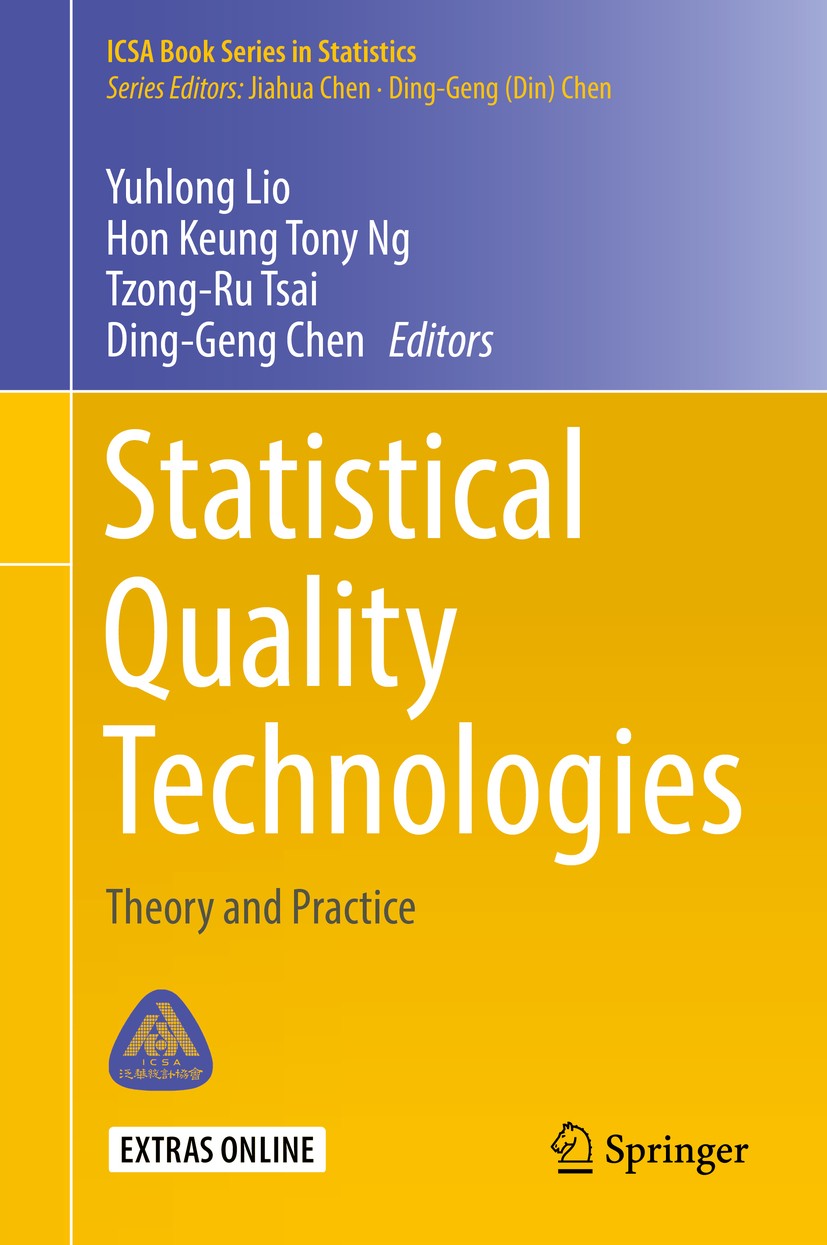| 书目名称 | Statistical Quality Technologies |
| 副标题 | Theory and Practice |
| 编辑 | Yuhlong Lio,Hon Keung Tony Ng,Ding-Geng Chen |
| 视频video | http://file.papertrans.cn/877/876633/876633.mp4 |
| 概述 | Enriches understandings of the state-of-the-art statistical methodologies for quality control, acceptance sampling and reliability assessment.Provides the background mathematical and statistical model |
| 丛书名称 | ICSA Book Series in Statistics |
| 图书封面 |  |
| 描述 | .This book explores different statistical quality technologies including recent advances and applications. Statistical process control, acceptance sample plans and reliability assessment are some of the essential statistical techniques in quality technologies to ensure high quality products and to reduce consumer and producer risks. Numerous statistical techniques and methodologies for quality control and improvement have been developed in recent years to help resolve current product quality issues in today’s fast changing environment. Featuring contributions from top experts in the field, this book covers three major topics: statistical process control, acceptance sampling plans, and reliability testing and designs. The topics covered in the book are timely and have a high potential impact and influence to academics, scholars, students and professionals in statistics, engineering, manufacturing and health.. |
| 出版日期 | Book 2019 |
| 关键词 | Industrial Statistics; Statistical Process Control; Statistical System Monitoring (SSM); Acceptance Sam |
| 版次 | 1 |
| doi | https://doi.org/10.1007/978-3-030-20709-0 |
| isbn_softcover | 978-3-030-20711-3 |
| isbn_ebook | 978-3-030-20709-0Series ISSN 2199-0980 Series E-ISSN 2199-0999 |
| issn_series | 2199-0980 |
| copyright | Springer Nature Switzerland AG 2019 |
 |Archiver|手机版|小黑屋|
派博传思国际
( 京公网安备110108008328)
GMT+8, 2025-12-14 16:14
|Archiver|手机版|小黑屋|
派博传思国际
( 京公网安备110108008328)
GMT+8, 2025-12-14 16:14


